May 24, 2025 | 00:14 GMT +7
May 24, 2025 | 00:14 GMT +7
Hotline: 0913.378.918
May 24, 2025 | 00:14 GMT +7
Hotline: 0913.378.918
From mid-July, farmers in Tho Xuan district (Thanh Hoa) focus on spraying herbicides and pesticides on rice. This year's summer-autumn crop, the entire Tho Xuan district planted about 7,450 hectares of rice with purebred rice varieties such as TBR 225, Thien Uu 8, Khang Dan, etc.
Like many years ago, the situation of harmful organisms on rice plants in the summer-autumn crop is forecast to become complicated and unpredictable, requiring farmers to be proactive right from the disease prevention stage. Unlike many years ago, in many fields of Tho Xuan district this year, the image of farmers struggling to carry herbicide and pesticide sprayers is no longer seen. Instead are unmanned aerial vehicles (drones).
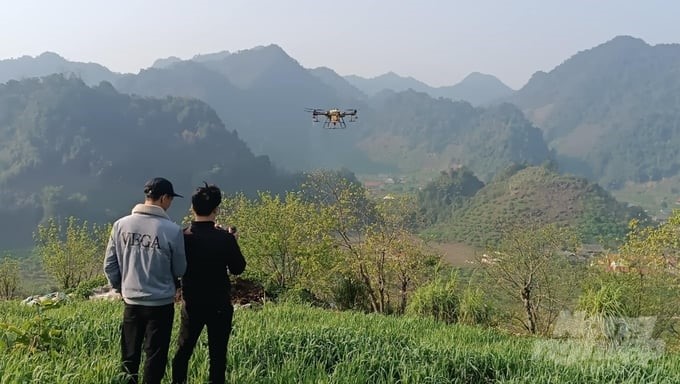
Drones are helping farmers reduce costs and labor in production. Photo: Quoc Toan.
To effectively treat pests and diseases on rice plants, right from the beginning of the crop, Ms. Le Thi Thanh (village 1, Xuan Sinh commune, Tho Xuan district) discussed with many households with cultivated areas in the same field area to share the cost of renting drones from Red River Drone Co., Ltd. to spray pesticides. At the foot of the field, the company's technical staff will take care of the stages from mixing and controlling the spraying for rice plants. Da Doi field in Xuan Sinh commune has an area of several hectares, but in just 30 minutes, the drone completed the pesticide and herbicide spraying stages as requested by farmers.
"Spraying herbicides and pesticides with drones is both fast, convenient, and cost-effective. If spraying manually, the cost of hiring labor is about VND 80,000/acre, but when renting drones, it only costs about VND 20,000-25,000/acre. Most importantly, people do not have to come into direct contact with chemicals, so their health is not affected. On the other hand, rice plants are not impacted because there are no people walking around in the fields. In addition, when using drones, the medicine is sprayed evenly across the field; spraying time is very fast; and production costs are reduced many times compared to doing it manually," said Ms. Le Thi Thanh.
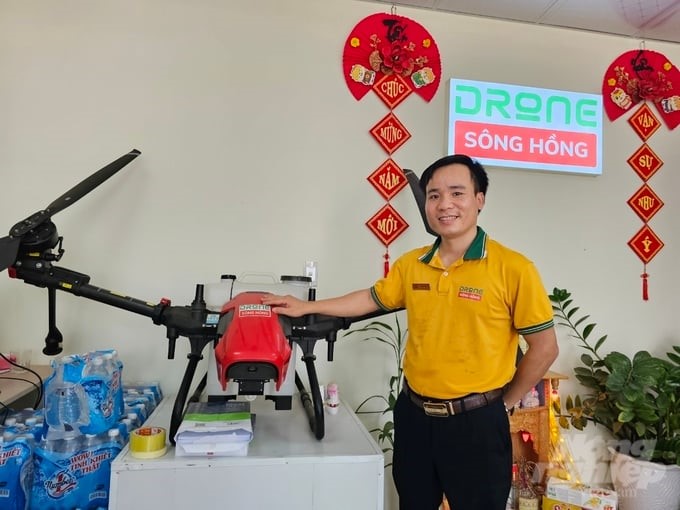
Mr. Le Van Liem, Director of Red River Drone Co., Ltd. (village 1, Xuan Sinh commune, Tho Xuan district), introduced the company's products. Photo: Quoc Toan.
Mr. Le Van Liem, Director of Red River Drone Co., Ltd. (village 1, Xuan Sinh commune, Tho Xuan district), shared: "To effectively use drones, technical staff only need to set the amount of medicine and map of the area that needs to be sprayed, and the machine will automatically find the spray area and then automatically return to the starting area after completing spraying.
The drone has an average unladen weight of about 25–40 kg; spray hose width is about 10 m; flight speed is about 40 km/h; average working capacity is 3–5 hectares/hour. Using this technology will help the drug solution spread evenly and penetrate completely into the stems and leaves, so it is much more effective than manual spraying."
Mr. Vu Quang Trung, Director of Thanh Hoa Sub-Department of Crop Production and Plant Protection, said that the application of mechanization in agricultural production, including drones, contributes to changing people's production thinking and is becoming an inevitable trend in modern agricultural production.
Currently, the whole province has applied 100% mechanization in the land preparation stage. Mechanization in the harvest stage reaches 90%; sowing and care reaches about 30%. However, bringing flying equipment into the fields to serve farmers is now not really popular due to low demand. The farming practices of many people have not changed. There are not many large-scale and concentrated production areas, so applying this technical advance in production still faces many difficulties.
In the near future, the use of drones will be a trend that contributes to solving the problem of labor shortages in agriculture, reducing production costs, increasing economic efficiency, and helping localities implement restructuring the agricultural sector.
Red River Drone Co., Ltd. has currently organized flight teams, linked with production groups and agricultural service cooperatives in many localities in the province, and at the same time expanded to Nghe An and Ha Tinh provinces and the Red River Delta region to serve people with an area of more than 1,000 hectares.
Translated by Thu Huyen
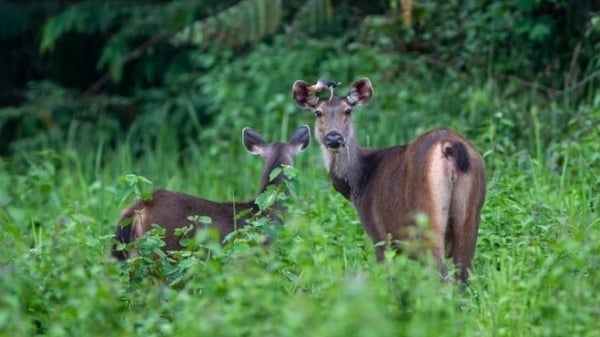
(VAN) WWF, GIZ, IUCN, UNDP call for biodiversity conservation and sustainable development must be regarded as a unity in strategies for a green future.
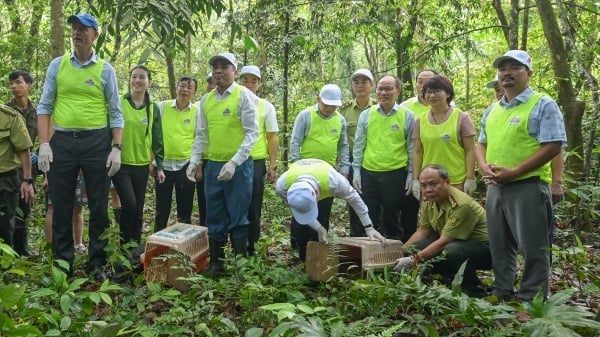
(VAN) On celebration of International Day for Biological Diversity, Deputy Minister Nguyen Quoc Tri called for practical actions to address nature and biodiversity conservation.
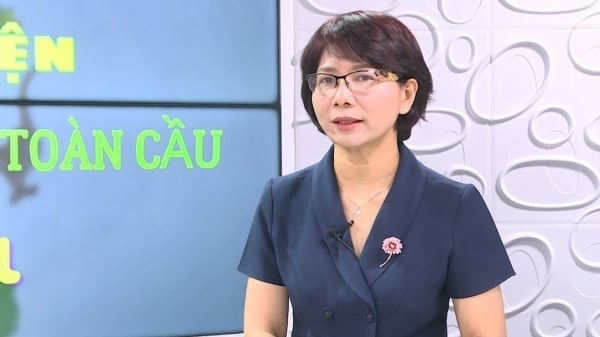
(VAN) Dr. Hoang Thi Thanh Nhan – Deputy Director of the Nature and Biodiversity Conservation Agency – highlighted this on the International Day for Biological Diversity, May 22, 2025.
![Ho Chi Minh city adapts to climate change: [2] Accelerating action](https://t.ex-cdn.com/nongnghiepmoitruong.vn/608w/files/chiqk/2025/05/22/4024-4220-bien-doi-khi-hau-1-100626_766.jpg)
(VAN) Clearly recognizing the challenges posed by climate change, Ho Chi Minh city has swiftly shaped its policies and implemented practical solutions to adapt.
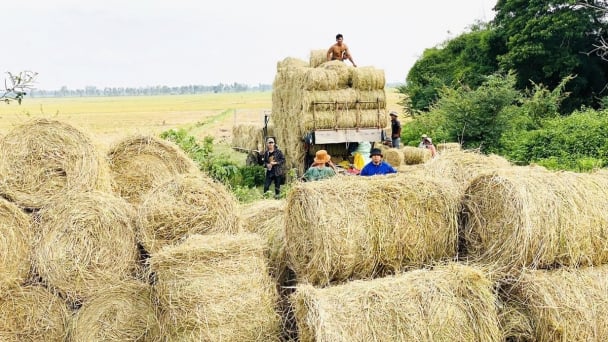
(VAN) Rice straw is no longer just a discarded byproduct, but it is becoming a green resource that helps farmers in the Mekong Delta reduce emissions and promote circular, sustainable agriculture.

(VAN) Other Effective Area-based Conservation Measures (OECMs) are solutions that contribute effectively to achieving the goals of the Kunming–Montreal Global Biodiversity Framework.
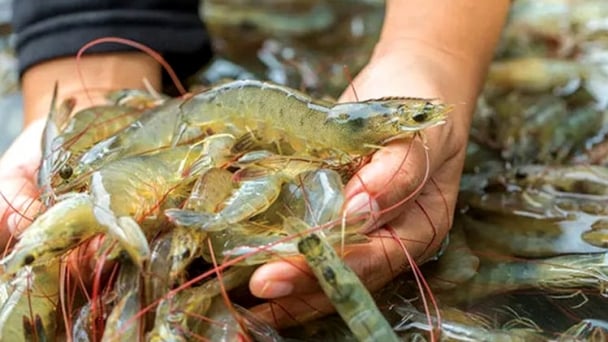
(VAN) A study assessing the carbon footprint of whiteleg shrimp farming in China shows the potential for carbon emission reduction through the use of renewable energy.